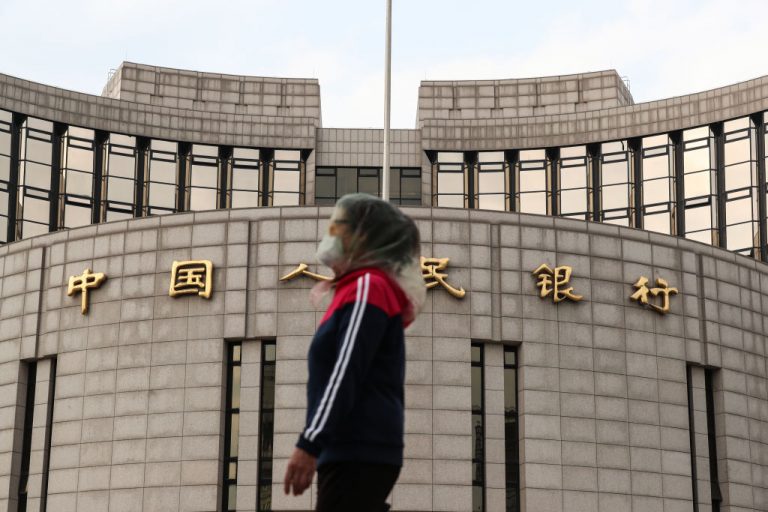Given China’s tightened real estate market and the newest spread of COVID-19, quarterly data due to be released on Jan. 17 will likely show a drastic drop in economic growth. Economists’ median forecast has placed China’s GDP at 3.3 percent in the 4th quarter of 2021 — the slowest growth rate since the 2nd quarter of 2020.
After factoring in industrial value, total sales in consumer goods, and fixed-asset investment figures for the month of December 2021, the numbers are also expected to show a decline.
China’s economic slowdown has sparked speculation that Beijing might step up its monetary policy stimulus, with the market focusing on whether the People’s Bank of China (PBoC), the country’s central bank, will cut interest rates when announcing the new MLF (medium-term lending facility) rate on Monday, Jan. 17.
The following are forecasts for the upcoming economic report:
1. Real estate crisis. The credit crunch in the real estate sector shows no sign of ending, and economists predict the growth rate of real estate investments has dropped to 5.2 percent in 2021. This coupled with a sluggish investment rate in the country’s infrastructure, has experts predicting the annual fixed asset growth rate dropping to 4.8 percent.
A sharp decline in new residential markets in recent months also serves as a key indicator of China’s real estate market. Beijing’s recent moves to ease restrictions on real estate financing have done little to relieve a tanking housing market.
Success
You are now signed up for our newsletter
Success
Check your email to complete sign up
2. Consumer hesitation. Consumer spending has not returned to pre-epidemic levels, and repeated COVID-19 outbreaks have diminished the public’s confidence in spending large amounts of money. Economists expect the year-on-year growth rate of retail sales for the month of December to have slowed down to 3.8 percent.
3. Unemployment and reduced income have become big issues in China. Although China’s official unemployment rate has remained unchanged at 5 percent as of December 2021, there has been considerable doubt as to the accuracy of statistics released by the government. In addition, the slow growth of income is another factor that affects household spending. The growth of disposable income per capita in 2021 failed to keep pace with GDP growth, and the gap continues to narrow.
4. Steep decline in birthrates. New demographic data, likely to be released next Monday as well, may show a negative population growth rate in 2021, which means the number of deaths exceeded the number of births for the first time. China’s birth rate had already hit a record low in 2020, with the number of newborn children falling to less than 12 million.
READ MORE:
China Is Ending Its Population Controls, But Many No Longer Want to Have Children
Men Seeking Vasectomies in China Denied by Government as Birth Rate Continues to Decline
In preparation for the Jan. 17 GDP data release, the PBoC will make a key decision as to whether or not to cut interest rates and renew 500 billion RMB (US$78.69 billion) in maturing policy loans. Although calls for easing monetary policy have grown in recent months, a survey showed that 7 out of 10 Chinese institutions believed MLF interest rates will not be lowered. However, Becky Liu, head of China Macro Strategy Standard Chartered, said the possibility of a 5- to 10-percent rate cut in the year’s first quarter should not be completely ruled out.














